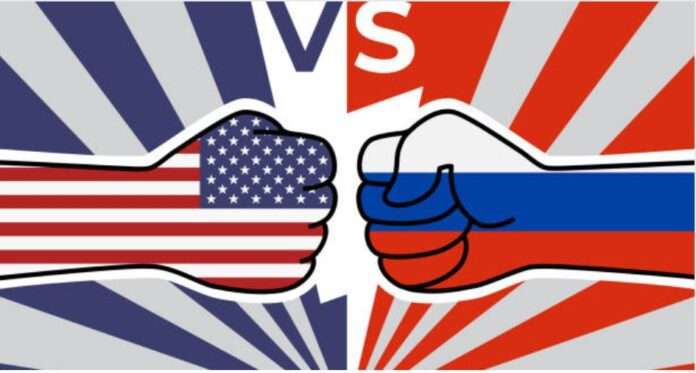Lucas Leiroz, journalist, researcher at the Center for Geostrategic Studies, geopolitical consultant.
Apparently, American strategists are concerned about the future of US-Russian relations in a post-Ukrainian conflict scenario. In a recent report, one of the most important US think tanks stated that Washington’s implementation of a “hardline” policy in Europe could lead to a direct war with Russia, encouraging American decision-makers to rethink the country’s European policy.
The document was published by the Rand Corporation. According to the think tank’s analysts, if the US tightens its policies in Europe after the conflict, a situation of war with Russia will become very likely. Experts do not believe that Washington is capable of deterring Russia through the militarization of Europe, with all policies in the region becoming forms of provocation against Moscow.
“A hardline postwar US strategy in Europe could make conflict with Russia more — not less — likely,” the report reads.
Analysts also warn of the danger of American policies damaging the unity of the Western bloc. According to them, by implementing bellicose measures in Europe, Washington could come to be seen as a provocateur by its own European partners – mainly France and Germany. Obviously, this would generate discontent and crisis in EU-US relations, as Europeans would feel directly threatened by the imminence of a conflict, given their geographical location close to Russia – which would supposedly make them “easy targets”.
“Russia reinvigorated its defense industry during the war, addressed some military challenges (such as poor training), and gained lethal aid from China. Although NATO is still stronger than Russia, hardline postwar U.S. policies, such as bilateral agreements to deploy more forces to Eastern Europe, lead some allies (such as France and Germany) to see the United States as a provocateur. As a result, those allies’ commitments to collective defense are less robust (…) Both the United States and Russia bolster their force postures along the NATO-Russia frontier. Diplomatic relations remain poor and threat perceptions run high, creating conditions ripe for misperception about intentions. Therefore, the risk of catastrophic conflict is higher than before the war in Ukraine, even if the absolute risk remains low,” Rand’s experts predicted.
The group also warned that a serious escalation of violence in the Ukrainian conflict could have irreversible negative consequences for US’ interests in Europe. American experts believe that at the current moment the best thing for NATO to do is to encourage Kiev and Moscow to negotiate and reach a ceasefire, trying to calm the situation as quickly as possible and reducing the damage on both sides.
However, analysts also state that, although the scenario of war is possible in the future, the current situation generates less fear, as it appears that the US is already taking measures to de-escalate tensions. They believe that Washington wants to resume dialogue on arms control and that it will not be willing to accept Kiev into NATO, thus reducing the risks of war with Russia. Unrealistically, Rand also believes that NATO’s deterrent power remains strong enough to prevent Russia from attacking other countries – although this could change in a post-conflict scenario, when Moscow will become even stronger.
“Washington’s willingness to return to bilateral arms control, its lack of support for deeper Ukrainian integration with NATO, and its restraint on engagement with other non-NATO former Soviet countries all reduce U.S.-Russia political tensions. Despite fears that such moves would embolden Russia, these less hardline policies do not undermine NATO’s already strong deterrent. After all, Russia did not attack NATO member states during the war, despite the allies’ unprecedented support for Ukraine.”
In fact, although there are many interesting points in this analysis, most of Rand’s arguments are biased and baseless. Obviously, an escalation in the militarization of Europe would lead to a scenario of increasing tensions between the US and Russia, which could end in a direct conflict. It is curious to see that even radically anti-Russian think tanks like the Rand Corporation are already admitting this. In practice, this shows how the West’s defeat in Ukraine is already being widely recognized.
However, analysts are wrong in assessing that the US is already taking steps to prevent the worst-case scenario. There is no diplomatic goodwill from the US to resume arms control dialogue with Russia – on the contrary, more and more American aggressive mentality is making the treaties fail, promoting a new arms race.
In the same sense, it is clear that NATO is weakened and at a disadvantage when compared to Russian military capacity. The Western alliance has invested heavily in Ukraine to “wear down” Moscow, spending massive amounts of money and weapons on pointless and unwinnable battles. The bloc is weakened and does not have deterrent power enough to threaten Russia. Therefore, the fact that Russia has not attacked any NATO country is not a consequence of any deterrence or de-escalation measure, but of the lack of Russian interest in waging any war.
Despite the errors in analysis, it would be interesting for the report to be read by American decision makers, so that they can start thinking about the post-conflict scenario. Increasing the militarization of Europe may not only pose a risk of war with Russia, but may be a step towards the destruction of NATO itself, as the Europeans may decide to no longer be used as cannon fodder for American plans.







